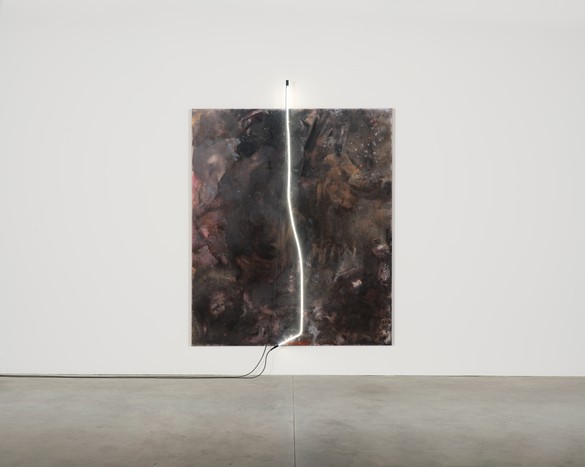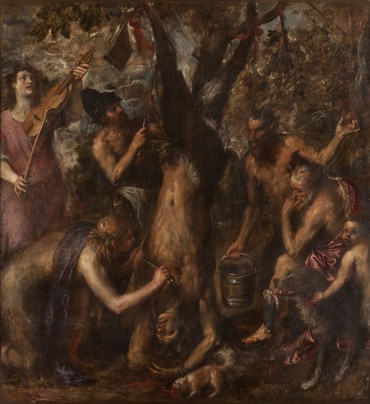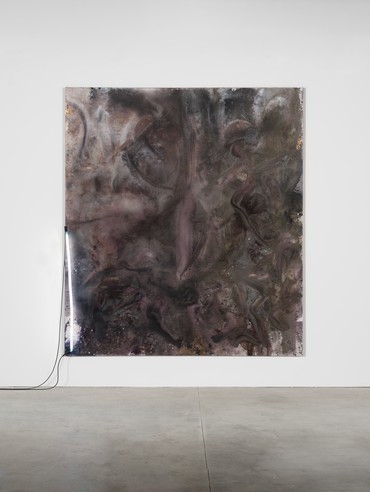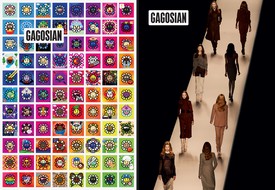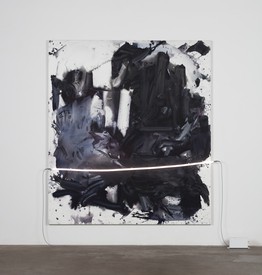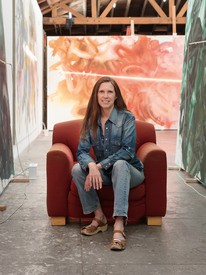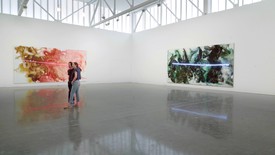
Francine Prose’s most recent novel is The Vixen (2022). Other books include Caravaggio: Painter of Miracles, Peggy Guggenheim: The Shock of the Modern, Reading Like a Writer, and Lovers at the Chameleon Club, Paris 1932. The recipient of numerous grants and awards, she writes frequently about art. She is a distinguished writer in residence at Bard College.
If the recent lockdowns and quarantines meant that we saw less art than we ordinarily do, perhaps one consolation was that our longing for art, as longing so often does, made us think about it more. Solitude encouraged baby steps back to first principles and basic questions, for example: what does art do, exactly? It’s hardly a new subject, but our newly available spare time enabled us to have that talk in the privacy of our homes, during sleepless-night conversations with (among others) Van Gogh, Frank O’Hara, Dave Hickey, and Sister Wendy Beckett. This heightened sensitivity to meaning and purpose may be what is meant by the expression “to see with fresh eyes,” a phrase I’d taken too literally, “fresh” as in seafood or lettuce. But what if it meant something closer to the ability to access the pure uncluttered space-alien vision with which David Bowie watches TV in The Man Who Fell to Earth?
So what exactly does art do? The most obvious thing that visual art can accomplish is to command our attention. It’s hard to imagine walking into a room in which one of Mary Weatherford’s paintings is installed and not noticing that it’s there, not looking to see what it is that so engages our interest. Clearly, we look at lots of things that arouse our curiosity, for somewhat more understandable reasons. We know why we’re rubbernecking the crash on the highway, we know what emotions we feel, but it’s trickier with art. Its hold on us, and what it evokes in us, is so much more mysterious. With Mary Weatherford’s work, what initially catches our eye are the bold splashes of dark or bright colors that make us rethink our notions of what color is—and isn’t. We’re drawn to the work by its willingness to let the material take control, by its ability to stay within certain parameters informed by art history without having to sacrifice the tawdry gorgeousness of neon, by its ability to make us reconcile something as old as the paintings on cave walls and something as (relatively) new as neon.
Another basic question: why does visual art make us think about light, an aspect of the visible world that we generally take for granted except at moments—sunsets, the first day of spring, power outages—that refuse to be ignored? One reason Caravaggio affects us so strongly is not only that we know where the light in his paintings is coming from, but that we can almost feel the light seeping inside us, illuminating us from within, warming us as it does so. In much of Weatherford’s work, there are at least two sources of light—one the light that falls on the canvas and one in the glowing neon tube that crosses its surface. Her paintings say to us: you can have color, you can have light, literally and metaphorically, separately and together. You can have darkness and light.
Weatherford’s work can send us down one of those seductive and informative rabbit holes with which the Internet is pitted: the history of neon light. In 1902, a French company, Air Liquide, tried unsuccessfully to market these tubes of gas for domestic lighting, but the brilliant red glow that the gas emitted failed to appeal to homeowners. Industry and the advertising business were quicker to see its potential. In 1923, a Packard dealership lit up the skies of Los Angeles with two large neon signs that attracted attention—and sold cars. For Weatherford, the story of neon is the story of modernism in America; it came from Paris, skipped New York, and went straight to California, which happens to be where the artist lives. It was in Bakersfield, she says, a town not often celebrated for much else, that she first understood the potential and fell in love with those thrilling corridors of light. Her work takes its cues from cave painting, from the Italian Renaissance, from Mesoamerican art, from Goya and Picasso, but the neon reminds us: Art is timeless, beyond nationality, but the fact is that we are here and now and in the United States.
Weatherford’s new paintings, slated to be exhibited at the Palazzo Grimani, Venice, to coincide with the Venice Biennale, reinterpret the compelling and endlessly relevant myth of Apollo and Marsyas. Among all the violent, unjust, and punitive Greek legends, it is among the most extreme.
The satyr Marsyas, the teacher of Orpheus and a talented musician whose instrument is the flute, challenges Apollo, the god of music, to a contest. Which of them is the more skilled and gifted artist? It’s agreed that the loser will submit to any punishment that the winner can devise. The Muses are appointed (or volunteer) to judge.
Marsyas loses, having failed to realize that the god could sing and play the lute at the same time, whereas the satyr’s instrument prevented him from doing both. His punishment is swift and vicious. Tied to a pine tree, he is flayed, and (in some versions) his hide is repurposed as a wine-skin. In Zbigniew Herbert’s great poem “Apollo and Marsyas” (1957), the satyr’s cry of agony is itself a kind of music, and the leaves of the tree to which he is tied turn white in the wake of his death.
In general, myths privilege magic over logic, yet this one may strike us as particularly illogical. Why would the satyr agree to such a risky bargain? Why is his punishment so extreme? Others have suffered for excessive hubris, for insulting or thwarting the gods, or for rejecting their sexual advances. Guilty of stealing fire from them, Prometheus is chained to a rock and doomed to have his liver devoured by an eagle, a torture repeated daily for eternity. But mostly these transgressors’ sentences involve transformation rather than torture; being turned into a calf or a flower surely seems preferable to having one’s skin removed in strips.
Yet like so many mystifying narratives, the myth continues to fascinate us. Is it warning us that art cannot save us? Is it reminding us that artistic talent doesn’t necessarily increase our reserves of moderation, forgiveness, and compassion? Is it telling us that—to paraphrase the last words that Ovid has Marsyas cry out—a human life is worth more than a flute—the classics’ answer to the question (Moral Philosophy 101) of whether the masterpiece or the old woman should be rescued from the burning museum?
The mystery—and the drama—of the myth inspired Titian, whose painting The Flaying of Marsyas (c. 1570–76) provided a more direct inspiration for Weatherford’s new work: a fittingly Venetian source for paintings destined for exhibition in Venice. Titian has never failed to speak to us, but his voice—amplified by the recent exhibition of his mythological paintings at Boston’s Isabella Stewart Gardner Museum—has never seemed louder or more clear. Maybe it’s because these paintings are so violent, because they find such ineffable beauty amid the disorder and chaos that we feel so strongly, closing in around us, at the present moment. It’s hardly coincidence that although Weatherford saw the Titian painting in a show at Rome’s Quirinale in 2013, she filed away the idea then, waiting to begin work on these paintings until January 7, 2021, the day after we watched bloodlust—that Apollo is satisfying—erupt in our nation’s capital.
Lucian Freud described Titian’s mythological scenes as possessing the “little bit of poison” that every great painting requires. He speculated that the poison in the paintings may be “a sense of mortality.” But if Titian’s Diana and Actaeon and Diana and Callisto (both 1556–59) possess that drop of poison—the venom of mortality—The Flaying of Marysas strikes us as having been steeped in it. The painting is the scream that Herbert transmuted into song. Dating from the 1570s, it is one of Titian’s last works, painted in his old age, when we can assume that mortality would likely have been at least intermittently on his mind.
Weatherford’s works…make us glad that there are artists making something, trying to say something, attempting to give us pleasure and at the same time remind us that this is life, in all its horror and violence, and in all its beauty and grace.
Francine Prose
I can’t think of another painting that so brilliantly depicts the ways in which horror can exist in the midst of great beauty. Hanging upside down, the dying Marsyas cleaves the painting down the middle. He’s half man, half meat. But Apollo, crouched in the lower-right-hand corner as he painstakingly goes about the work of flaying Marsyas, looks so pretty, so cherubic in his laurel wreath and blond curls, we can hardly believe that he is the same deity who ordered this grisly execution. It’s a party, a social event. A cute little dog is licking up Marsyas’s blood. What a treat! There’s even live music: an angelic creature is playing the violin. There are spectators, among them a child. The old man watching the execution is said to be Titian’s self-portrait.
The paintings in Weatherford’s series The Flaying of Marsyas examine the ways in which time has worked on Marsyas and on Titian. The story is still in there, hidden within these new works, but we have to search for it. If we look long and hard enough, or, alternately, if we let our eyes drift out of focus, the little dog will pop out at you, and look! There’s Apollo, over there. Another thing that art can do is make you see something that you didn’t see a minute ago. It’s a primal pleasure when something comes into focus. Weatherford has credited, among her influences, a 2009 show at the Grand Palais, Paris, Une image peut en cacher une autre (One image may hide another), a major exhibition of works containing hidden images, from the faces Arcimboldo constructed from fruit and vegetables in the sixteenth century to the bodies that emerge from Edgar Degas’s Normandy landscapes. I remember being told, probably in college, that you weren’t supposed to see things in, say, a Jackson Pollock. But Weatherford’s work makes you think: why not? Isn’t it a human impulse to try and find something concealed inside something else? And why should we deny that in the service of art? How many of us—I’m including myself—can recall the profound and joyful shock of first seeing, as children, the vintage trompe l’oeil print of the two fashionable ladies at tea (or are they sipping ice cream sodas?) that, on second glance, reveals the skull at its center.
Speaking of Caravaggio’s light, the color of these paintings recalls the vast expanse of darkness at the top of his Burial of Saint Lucy (1608), a chasm of brown that seems lit from within. Weatherford speaks of warm earth tones, and they’re certainly here, but one doesn’t evoke The Flaying of Marsyas and go toward browns and deep reds without having the viewer think, as Titian so clearly thought, about the flesh beneath the fragile and terrifyingly vulnerable protection of skin.
I suppose you could say these are dark paintings. I suppose you could say that it’s a dark moment. As I write this, war is raging in Ukraine, and as we watch it, in our homes, on television, each of us becomes a version of Titian’s self-portrait: a spectator at a tragedy.
Weatherford’s works call to mind Goya’s black paintings, Picasso’s Guernica, and of course the Titian. Complicated, cautionary, dark, they nonetheless make us grateful that art exists, that artists have been able to create something out of our bleakest moments. They make us glad that there are artists making something, trying to say something, attempting to give us pleasure and at the same time remind us that this is life, in all its horror and violence, and in all its beauty and grace. Among the things that art can do is to remind us of something we need to keep in mind: that human beings can not only destroy but create, and that those creations are, as time has shown, what (we can only hope) will survive and endure.
Artwork © Mary Weatherford
Mary Weatherford: The Flaying of Marsyas, Museo di Palazzo Grimani, Venice, April 20–November 27, 2022
